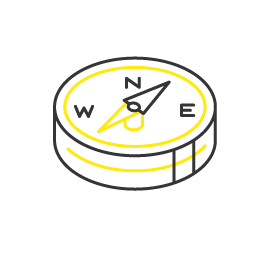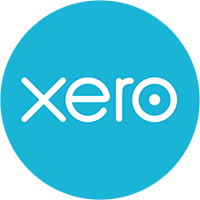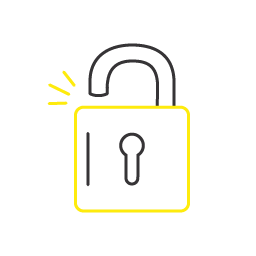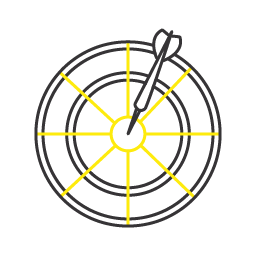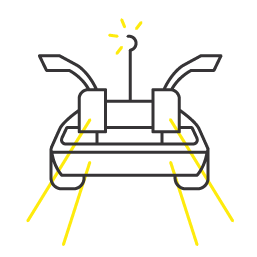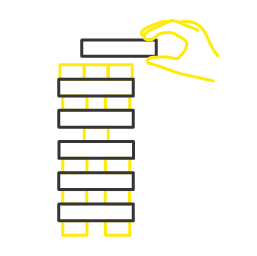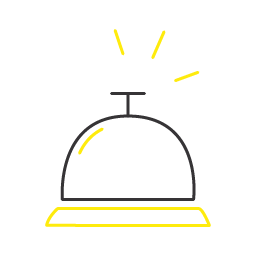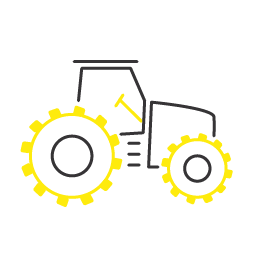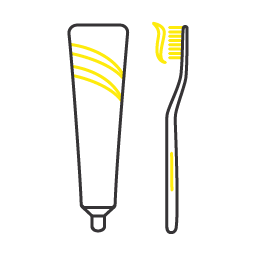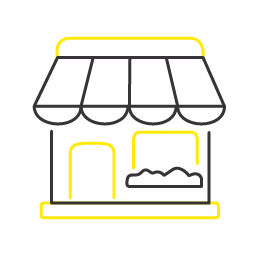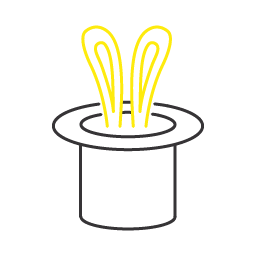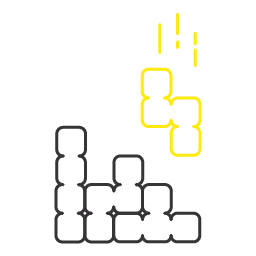With things changing daily [if not hourly] we will be updating this blog as new information becomes available [so save the link for future reference].
Clearly the government is getting out the cheque book to try and minimise the impact of the Coronavirus on all Australians now, and for the long term.
The government focus appears to be on keeping people in jobs while helping some of the less fortunate like age pensioners with a little extra cash [individuals we know historically tend to spend such handouts]. The measures are temporary [so no long-term impacts on the budget] and are targeted at getting things moving. With ‘business’ being a core part of the stimulus, the government package is putting faith in business owners to retain staff and invest in the things they need… keeping their businesses on track and growing.
“Our plan will back Australian households with a stimulus payment to boost growth, bolster domestic confidence and consumption, reduce cash flow pressures for businesses and support new investments to lift productivity?” the Prime Minister said.
Here is a summary of the Federal Government stimulus package:
Click here to view the latest on “Instant Asset Write-off”.
JobKeeper Payments
Think of this payment as a subsidy to the employer from the Government to continue paying their employees.
Each eligible employee receives at least $1,500 per fortnight [before tax]. If they were already being paid more than this amount from the employer then their income will not change although we understand they will still be eligible for these payments if hours are reduced as long as the employee is still paid the $1,500 as a minimum. If they were receiving less than this amount, the employer will top up the amount paid to them to the $1,500 [before tax] per fortnight. Notably, the employer does not need to pay superannuation any any ‘top-up’ amount to get the employee to the $1,500 payment.
This is effective from 30 March 2020 and is for a maximum period of 6 months. Employers will be reimbursed back to 30 March 2020.
Key Dates are summarised as follows:
- 8 May 2020 = Date you need to have paid the minimum amount to all eligible employees [this has been extended from 26 April]
- 31 May 2020 = Enrol for JobKeeper with ATO to qualify for the initial fortnights of JobKeeper but you can enrol for later months at a later date [this has been extended from 30 April]
To see all the updated details on JobKeeper Payments, click here.
Cash Boost Payments [Employers get cash of up to $100,000]
A key part of the Federal Government economic support package is the ‘Cash Boost Payments’. But, should it really even be called a payment … it is more of a credit against other BAS liabilities than a payment as such [although it may in some circumstances create a refund].
Initially, the Government provided up to $25,000 with a minimum of $2,000 for eligible businesses. This has now been increased to a maximum of $100,000 and a minimum of $20,000.
The payments will be made as a credit of up to 100% of the amount withheld from salary and wages [up from 50%] and will be automatically applied to activity statements starting with your March BAS.
To review your eligibility and see some examples of how it will operate, please click here.
Temporary relief for distressed businesses [and their directors]
These changes will be significant for those distressed businesses that are worried about insolvency and bankruptcy implications.
Under the temporary rules, the Government is increasing the threshold of when a creditor can issue a statutory demand on a company from $2,000 to $20,000 [and this will be for 6 months].
The threshold for the minimum amount of debt for a creditor to start bankruptcy proceedings is also being increased from $5,000 to $20,000.
When a demand is issued against a company or a bankruptcy notice issued, if they fail to respond they are presumed insolvent or it is considered an act of bankruptcy. The time limit for both of these notice periods is being increased from 21 days to 6 months.
Insolvent trading rules have also been relaxed to ensure directors can make the right decisions rather than be worried about personal liability. Directors will be relieved of the personal liability that would be otherwise associated with insolvent trading for a period of six months.
Further information is available on the Treasury website https://treasury.gov.au/sites/default/files/2020-03/Fact_sheet-Providing_temporary_relief_for_financially_distressed_businesses.pdf
Supporting lenders by guaranteeing new debts
The Government proposes the setup of the Coronavirus SME Guarantee Scheme. The scheme will provide a guarantee equal to 50% to those that lend to SME’s to support short-term unsecured loans to SME’s with the intention of increasing the willingness of banks to lend SME’s money during these times.
Other eligibility criteria can be summarised as follows:
- Turnover will need to be less than $50million
- Maximum loans of $250,000
- Loan term up to 3 years
- No repayments required in the first 6 months
- Loans will be otherwise unsecured finance [ie no assets required to be provided]
One thing to note here is that even though you may not need to provide further security, [assuming you go to your existing lender for the additional debt] you will probably already have given them everything by way of security
Responsible lending can also be ignored for lenders providing credit to small business customers. This exemption will also be for 6 months and will apply to any credit increase or new credit for business purposes only.
RBA also announced earlier in the week a further cut in the official cash rate to 0.25% and the establishment of a term funding facility for the bank system so that banks can have access to at least $90billion in funding at a fixed interest rate of 0.25% per annum [further reducing funding costs to banks].
Further information available on the Treasury website https://treasury.gov.au/sites/default/files/2020-03/Fact_sheet-Supporting_the_flow_of_credit_1.pdf
Early access of up to $10,000 from super
Individuals impacted by the coronavirus will be able to access up to $10,000 from their super between mid-April 2020 and 30 June 2020, with potential for a further $10,000 to be accessed in the 2020/2021 financial year. These payments from super will be tax-free.
These payments will only be available to you if you meet the eligibility criteria [see link below]. Many of our business clients will not meet this eligibility criterio but we may be able to talk about other options regarding your super which will provide you with some relief.
To access your super under these measures you will need to apply via www.mygov.au and be able to certify that you meet the eligibility criteria. This will remain the same even if you have a self-managed fund [SMSF] but we emphasise, please do not just take cash from your SMSF!
To be eligible for this you need to meet one of the eligibility criteria below:
- You are unemployed
- On or after 1 January 2020 you were:
- Made redundant
- Had your working hours reduced by 20% or more
- Are a sole trader – whose business was suspended or has had their hours reduced by 20% or more
- Eligible to receive one of the following government payments:
- Jobseeker
- Youth Allowance for job seekers
- Parenting payment
- Special payment; or
- Farm household allowance
Further information available on the Treasury website at https://treasury.gov.au/sites/default/files/2020-03/Fact_sheet-Early_Access_to_Super_1.pdf
Relief for Self Funded retirees
Self-funded retirees will have their pension minimums reduced by 50% for 2019/2020 and 2020/2021 financial years to 2% of the fund value. This measure is designed to take the pressure off anyone who doesn’t require access to their pension for personal cash flow. This will help retirees avoid selling down assets and realising losses, instead, it will allow their capital to remain in the market as it recovers.
We saw this measure work effectively during the Global Financial Crisis and we will be reaching out to our clients with their updated pension minimum requirements for the 2020 financial year.
More information available at https://treasury.gov.au/sites/default/files/2020-03/Fact_sheet-Providing_support_for_retirees_to_manage_market_volatility.pdf
Section 1
A massive increase in ‘instant asset write off’
As of 12th March 2020, it is proposed that the current instant asset write off threshold is increased from $30,000 to $150,000. They also propose to offer the write off to businesses with an aggregated annual turnover of up to $500 million (which is up from $50 million) but this is only until 30 June 2020.
In my view, this will definitely be enticing for businesses to bring forward expenditure into the current financial year. That vehicle, truck, machinery, or other assets you know you want can be immediately written off within the requirements. This proposal applies for new or second-hand assets first used or installed ready for use between 12 March 2020 and 30 June 2020.
A word of warning though that the saving is only the tax saving. That is, if you trade in a company and spend $100k on say a tractor, the tax saving is only $27,500. You would have always been entitled to that tax saving but this brings forward the deduction so that cashflow is aligned with tax timing.
UPDATE: As of 9 June 2020 the Federal Government has announced an extension of this measure to 31 December 2020 [taking the urgency out of 30 June 2020 deadline to have installed and ready to use].
The write-off is due to be scaled down from 1 January 2020 to only $1,000 and only for those businesses with annual turnover below $10 million, however, we expect the government to be under significant pressure to keep something more generous in place.
Accelerated Depreciation to 30 June 2021 [Investment Allowance]
Unlike the instant asset write off change, the government is also encouraging investment by offering accelerated depreciation through to 30 June 2021 for businesses with an aggregated turnover of less than $500 million. This will take the form of an additional 50% depreciation of any asset purchased in the year of the purchase. Given the above this would be applicable for:
- asset purchases greater than $150k before 30 June 2020; and
- asset purchases greater than $1k between 1 July 2020 and 30 June 2021.
The examples from Treasury show that this 50% deduction is to be treated like an investment allowance as a reduction on the original cost which is used for additional depreciation deductions [which by the way are in addition to the 50% deduction].
Again, we remind you that the saving is only tax savings and the real benefit is pulling forward the tax deduction rather than spreading it out over a longer period under the normal rules. These rules are also effective as of 12th March 2020 if passed as legislation.
Wage subsidies for apprentices and trainees
To protect jobs of apprentices and trainees, it is proposed that eligible employers can apply for a wage subsidy equal to 50% of an apprentice or trainee wage for up to 9 months from 1 January 2020 to 30 September 2020 [extending the stimulus past 30 June 2020].
The subsidy will be available to small businesses employing fewer than 20 full-time employees who retain an apprentice or trainee. The apprentice or trainee must have been in training with a small business as at 1 March 2020.
Employers will be reimbursed up to a maximum of $21,000 per eligible apprentice or trainee ($7,000 per quarter).
Employers can register for the subsidy from 2 April 2020. Final claims for payment must be lodged by 31 December 2020
New Coronavirus Supplement Payment
The Government is temporarily expanding the eligibility for income support payments and almost doubling income support payments through the implementation of a Coronavirus Supplement Payment of $550 per fortnight.
To be eligible you must be eligible for:
- Jobseeker payment
- Youth Allowance Jobseeker
- Parenting Payments
- Farm Household Allowance
- Special Benefits recipients
Expanded access to the income support payments and the Coronavirus Supplement will be available to those who lose their job, sole traders, self-employed, casual workers and contract workers who meet the income tests as a result of the economic downturn. Asset testing will also be temporarily waived for eligibility to Jobseeker payment, Youth Allowance Jobseeker and parenting payments. The ordinary waiting periods of one week has also been waived along with other timing reductions.
Previously many were still excluded from accessing the JobSeeker Payment [including the Coronavirus supplement] due to the income of a spouse or partner. The Government has now announced a proposal to increase the income test to $79,762 per annum [ie this is how much your partner must be earning to exclude you from the JobSeeker Payment].
Further information is available on Treasury website https://treasury.gov.au/sites/default/files/2020-03/Fact_sheet-Income_Support_for_Individuals.pdf
Payments to households and lower-income Australians [including pensioners and other social security recipients]
It was originally proposed to pay a once-off payment of $750 to eligible recipients. This will be paid automatically from 31 March.
They have now announced a second payment of a further $750 for those eligible payment recipients and concession card holders on 10 July 2020. This payment will be paid automatically from 13 July 2020.
Payments will be exempt from tax and not count to income tests.
For a full list of who is eligible for each payment see the Treasury website https://treasury.gov.au/sites/default/files/2020-03/Fact_sheet-Payments_to_support_households.pdf .
Moratorium on Evictions
The State and Territory Governments have essentially agreed to ‘ban’ evictions of both residential or commercial tenancies. Banks have also announced they will provide further relief to bigger companies on loans up to $10million with a condition designed to encourage landlords to support their tenants through these tough times.
Extra support for heavily affected regions
The government is also proposing to allow $1 billion to support disproportionately affected sectors, regions, and communities reliant on such industries as tourism, agriculture, and education. It looks like this will take a few different forms from the waiving of fees and charges to helping identify alternative export markets or supply chains. We will need to watch this space with this one a little more to identify the opportunities.
Administrative support
The ATO has also announced a number of administrative concessions to ease the pressure. These will include the following:
- Deferring by up to four months the payment date of amounts due through the business activity statement (including PAYG instalments), income tax assessments, fringe benefits tax assessments and excise.
- Allow businesses on a quarterly reporting cycle to opt into monthly GST reporting in order to get quicker access to GST refunds they may be entitled to.
- Allowing businesses to vary Pay As You Go (PAYG) instalment amounts to zero for the April 2020 quarter. Businesses that vary their PAYG instalment to zero can also claim a refund for any instalments made for the September 2019 and December 2019 quarters.
- Remitting any interest and penalties, incurred on or after 23 January 2020, that have been applied to tax liabilities.
- Working with affected businesses to help them pay their existing and ongoing tax liabilities by allowing them to enter into low-interest payment plans.
More information is available at:
https://treasury.gov.au/coronavirus
At this stage, some of these items are still only proposals and until they are legislated and receive royal assent we cannot rely on what has been announced. That said, it is proposed that some of the measures are effective immediately.
The government cannot solve all of our business woes so although I see the proposals as favourable and I am optimistic they will have an impact, don’t forget to review your business at a deeper level. Our tips in that regard have been summarised in this blog … click here.
Other resources to help:
To see what else we recommend you consider in your business, please read our blog on what to do in your business: https://businessdepot.com.au/blog/coronavirus-not-what-the-doctor-ordered-for-business/ you can also contact us and chat about our business services that may also be able
If you would like to know more about how you can take advantage of the stimulus available or just don’t know where to start, reach out to us at 1300BDEPOT or oneplace@businessdepot.com.au or directly contact one of our team. Ask us about our business services and learn how they may be of benefit to you.






